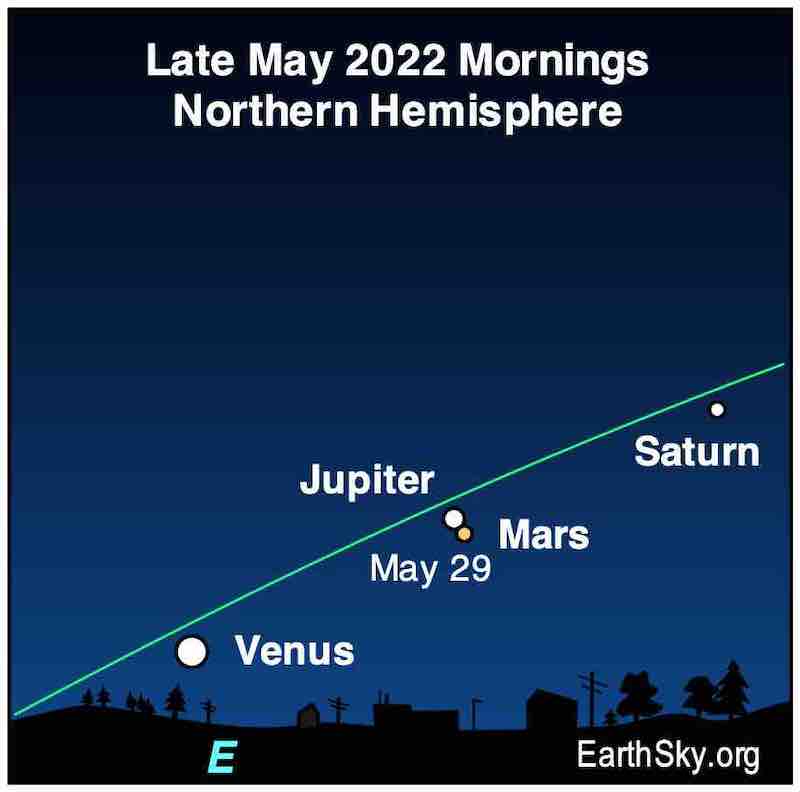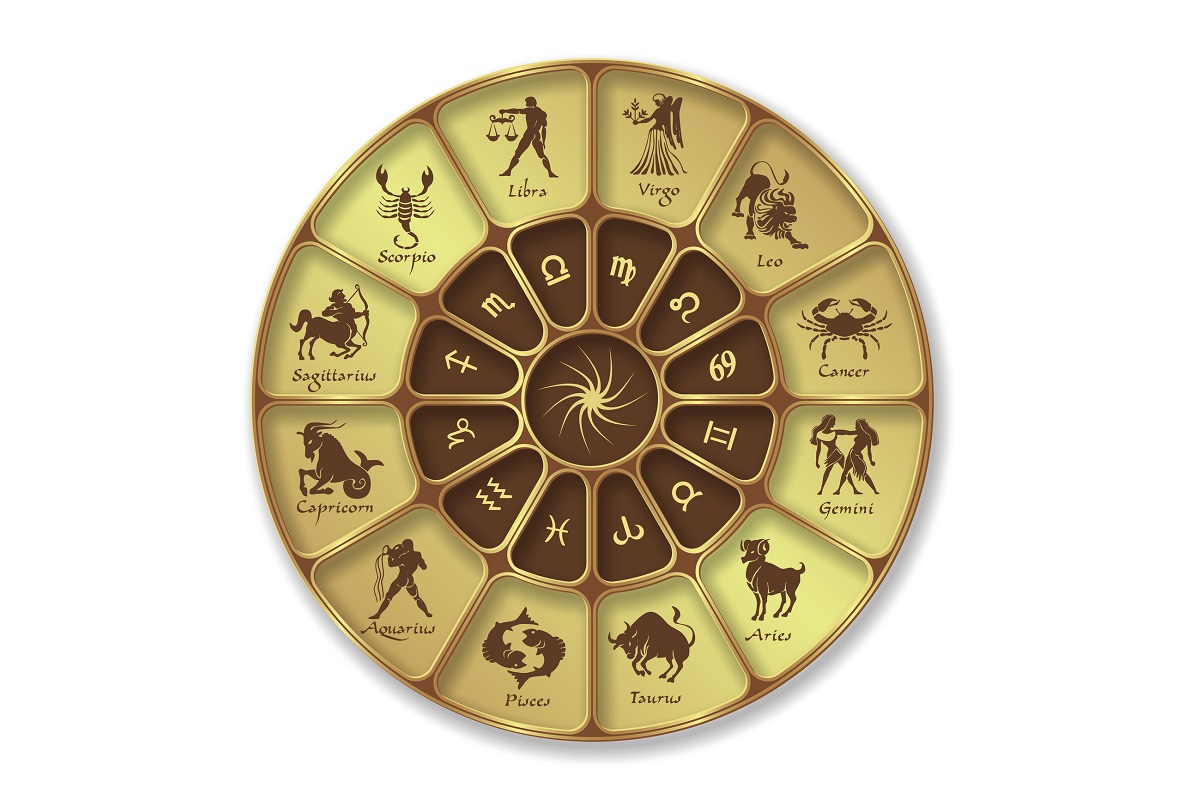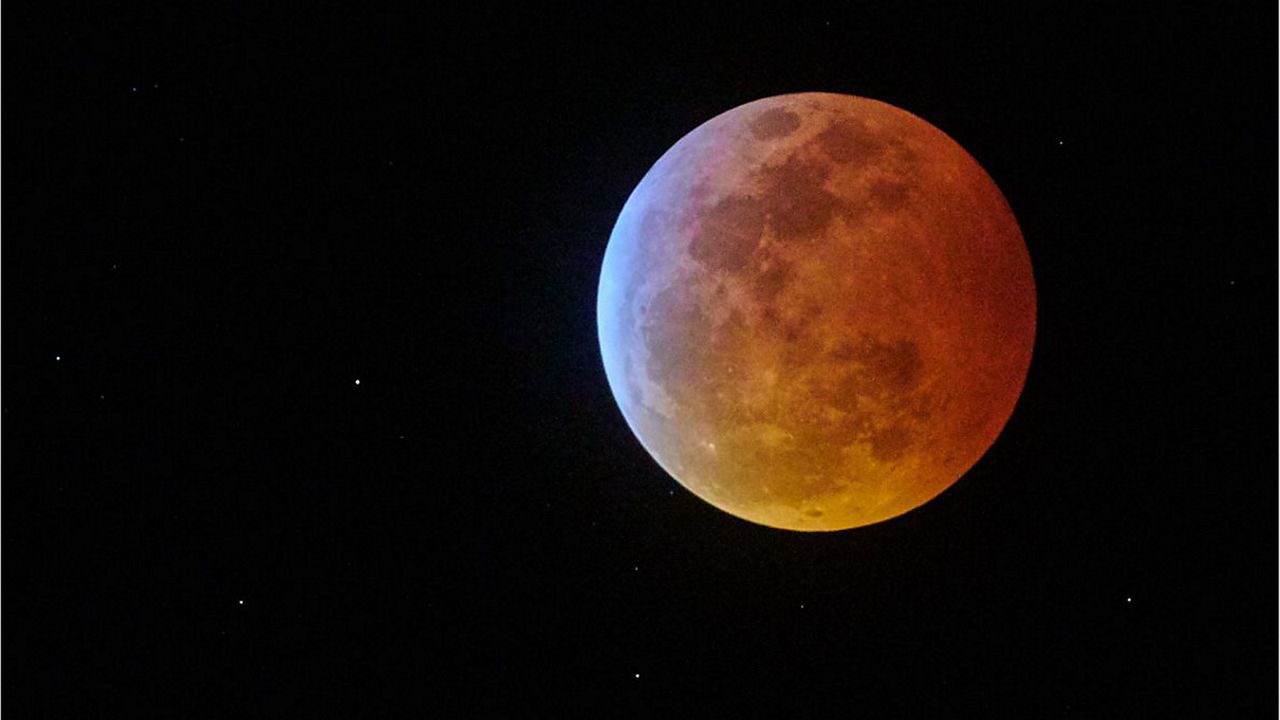
LAS CRUCES - Astronomers can't go back in time to observe how the solar system was formed, but they can observe planets that are forming now and use computer simulations to help them better understand the process.
A New Mexico State University astronomy professor is part of a team of scientists that wrote a paper published this month in the journal "Nature" that has identified a protoplanet in another star system that may be forming differently than expected.
EarthSky | Mars and Jupiter conjunction, May 29

If you’re an early riser, you have probably noticed the reddish planet Mars inching closer to bright Jupiter in the sky before dawn.
On May 24 and 25, the waning crescent moon passes below the pair of planets. In the Northern Hemisphere, Mars is directly to the right of Jupiter as the conjunction nears. On the morning of their closest approach, May 29, Mars slips just below the solar system’s largest planet.
Mars and Neptune | StarDate Online
The edge of the realm of the planets is marked by Neptune, the Sun's fourth-largest major planet. It's almost four times Earth's diameter. But you need strong binoculars or a telescope to pick it out. For the next few mornings, though, it's a little easier to spot than average.
Neptune looks so faint because it's remote — an average of 2.8 billion miles from both Earth and the Sun. At that range, the Sun is just one-tenth of one percent as bright as it appears from Earth. That means there's not much sunlight to illuminate the planet.
Scenes from space: Full supermoon and a total lunar eclipse
The celestial views these past few weeks have been stunning, including the planets on parade , and this month's full moon will be a sky spectacle.
This is not just a regular full moon, it's considered a supermoon. If that weren't exciting enough, this month the full supermoon coincides with a total lunar eclipse.
What you need to know about total lunar eclipse May 15
MEMPHIS, Tenn. (WMC) - The moon will be giving us a special show in the night sky with a total lunar eclipse set to happen on May 15.
Jim Garvin, NASA Goddard Space Flight Center Chief Scientist, joined Action News 5′s Andrew Douglas at the digital desk to talk about it, along with why the moon will turn red.
Moment of Science: Planetary Rings
Noted philosopher Beyoncé once said, "If you liked it, then you should've put a ring on it." We're back out in space this week, discovering how we get rings around some planets, but not others.
* Chances are you just thought of the planet Saturn. Galileo discovered those rings in 1610... and until the 1970s, we thought it was the only planet with rings. It turns out the other gas giants -- Jupiter, Uranus, and Neptune -- also have them... but why?
Horoscope Today: Astrological prediction for May 14

Let’s know what astrology and the planets have in store for people born under different sun signs. Astrology reveals the effect of planets today.
Today, your health is expected to be healthy. Due to your good health, you can plan to play with your friends today. A colleague of your office can steal one of your valuable items today. Hence, you need to remain careful and keep your items in check.
We love trees 🥰🍀💕❤️💋😘
#NFT #ETH #nftgiveaways #nftcommunity #Giveaways #NFTPromotion #ART
https://opensea.io/collection/aotam
Hot NFT tree art collection available. This is BIG!
See the amazing artwork. Click here.

/cloudfront-us-east-1.images.arcpublishing.com/gray/7Q7XCWR4PFGMTBAE2ICVRFYPIE.PNG)
/cloudfront-us-east-1.images.arcpublishing.com/gray/M4FPZ6Q3INAYDGXB2FJJIWRFQU.PNG)
No comments:
Post a Comment